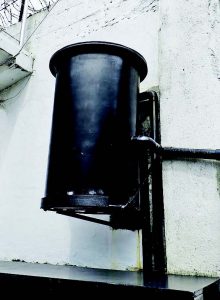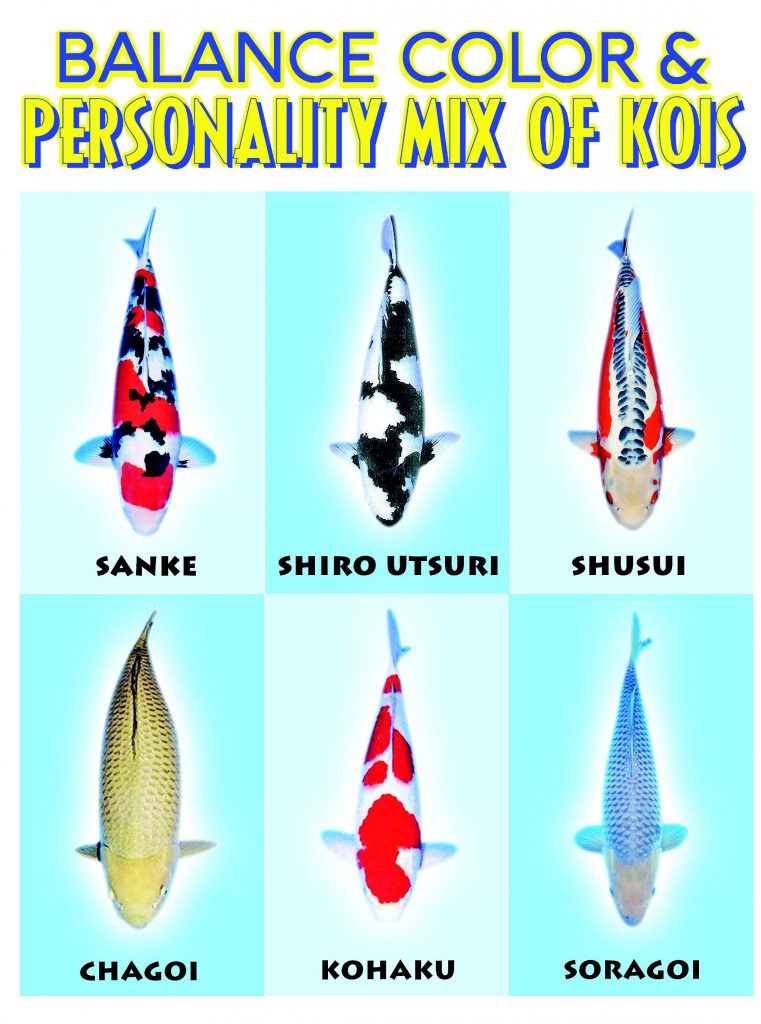Everybody with a backyard garden wants to have a koi pond, and why not? For me, koi fish are the best ones for ponds when provided with the requirements.
They are best viewed from the top. Koi have a wide range of color and you have the choice to create a color theme. The most common ones have mixed colors that provide. In the past, I set up an all-platinum koi in an all-black pond and the effect was brilliant. Koi are also very hardy fish to keep. Each koi has a distinct personality.
Frequent questions pertain mostly to the ease of maintenance. My reply is always the same: Take care of the water quality and the fish take care of themselves.
Water quality
Things to consider include water parameters, pH, nitrites, and nitrates (least harmful). Obtaining the right water parameters means healthy koi. Invest in a good-quality water test kit. Major fish health concerns are avoided if the water is good.

Based on experience, most hobbyists are concerned about ammonia and nitrites, and for koi, the major drop in pH is one principal cause of fatality. Even with the right feeding and filtration, I would always recommend a constant partial water change at least once a week — the more frequent, the better.
Filtration system
A pond’s filtration system is the engine that leads to peak water quality. The bigger the filter, the better the internal structure design. I designed my filter system for my pond with three major objectives: ease of cleaning, space, and filtration efficiency.
My target: I should be able to finish cleaning within 20 minutes. With the system I use, I simply lift the cover of the sump filter and clean the mechanical debris accumulated on the filter floss. The water used in cleaning the floss is the old pond water.

The most conventional filter that saves space is set up below floor level. My filter design is movable and can be positioned where available space permits.
Make sure the internal design is effective. Water quality should be achieved with minimum electricity from the submersible pump.
I use a barrel pre-filter for mechanical debris leading to a sump located at the top of my pond. The sump design includes another layer of mechanical filtration, then a biological layer, and a UV lamp. The last stage brings the water out of the sump and creates a water curtain or waterfall effect.
Waterproofing
Often, hobbyists focus on pond design, varieties of koi, filtration, then waterproofing. I believe it should be the reverse: Invest more on water proofing, filtration, pond design, and koi fishes, in that order. Even when the filter has problems, it can be solved temporarily, using either ready-to-install commercial filters or high-powered air bubblers. But if waterproofing fails, nothing can be done except to reset the whole pond.
Most contractors don’t provide a warranty for waterproofing because most are not meant for ponds, but as water-resistant coating for outdoor residential use.
There are two major types of waterproofing use in the industry: the membrane and the liner.
Waterproofing membranes consist of thin layers of watertight material laid over the surface. Tiles can then be added over the membrane. In membranes, major issues revolve around external factors — floor movements cause small cracks in the pond. Since the membrane method does not contain any mechanical strength, it easily follows the cracking of the pond cement, causing leaks.
Rubber and plastic liners generally resist even floor movements. But because of materials used, they are not durable enough in the long run. They are also often sandwiched by cement, so that repair is not possible without some tearing. Again, this results in resetting the pond.
Then, there’s fiberglass waterproofing — I will be featuring soon. It provides both the mechanical properties of liners, and coating benefits of membranes.
Pond size

The most common questions asked about koi ponds are about how big and deep the requirements would be. It is so hard to answer, since there are so many considerations needed. Instead, I would normally give a simple checklist questionnaire. How many koi fishes do you intend to keep? What is the maximum space you can provide for filtration? Are there children living with you, making a six-foot-deep pond dangerous? Who will maintain the pond? Do you have concerns with water and electricity bills?
Warning
I noticed that many pond keepers want to keep algae to a minimum by adding a janitor fish. This is a major disaster in my opinion. Hypostomus plecostomus, the suckermouth catfish or common pleco, is a nocturnal fish. They find their food while your koi are sleeping at night. They tend to suck at and stick to your koi’s body and fins. The next day, your koi may have injuries and will be severely stressed out. The common plecos also grow rapidly, outgrowing the pond and competing with koi in terms of nutrition and water requirements.
Pond mates
Some types of fish live well with koi. Tin foil and Bala sharks are nice additions, since these fishes are sensitive to water changes. Their health is a good indicator of the pond’s water quality. I have also seen ponds with Angelfish and they are silent beauties for ponds. They normally achieve their maximum growth in ponds because of the water depth provided.
Local or imported koi
Local or island-born koi are less expensive than their imported counterparts. If you do not want your koi to reach sizes of 30 to 36 inchs, you can go for patterned local koi. I recommend island-born koi for complete beginners.

We have around two major legit imported koi sellers and based on my experience, their quality is assured. Be careful when buying imported koi from a non-reputable seller.
Water effects on ponds
Curtain fall effects give a nice illusion of a wall made of water. The design to create the effect should be well thought of since it’s not easy to maintain the water movement consistently.

As for heavy splash effects, many gardens love to have strong water sounds. The advantage of the heavy splash is that it produces high amounts of oxygen by breaking water surface. The ammonia exchange keeps the water healthy.
Feeding
One of the things people find most enjoyable about koi is feeding them. Be gentle with them and soon, you will experience feeding them out of your hands. Chagoi and Soragoi often feed directly from the hands in no time; they are gentle giants.
Invest in good quality koi food, especially during the koi fishes’ juvenile years, since this dictates growth rate and prevents stunting. More protein is needed for young koi. Adult koi need less protein. Good feeds also help maintain water quality.
Koi size
If you want to level up the koi care, it’s a good practice to measure them every month to ensure proper growth. It’s important to measure them properly as not to stress them.

If you want a good mix of colors, I recommend kohaku, sanke, utsuri, platinum, and soragoi. This provides a balance in both their personalities and color combinations.
A garden with a koi pond is a sight to behold. The long lifespan of koi ensures our enjoyment with them for a long time. My office staff loves feeding them. Koi fishes are a complete package in terms of color, personality, size, and the ease of keeping them. They are in a league of their own.
This appeared in Animal Scene magazine’s April 2019 issue.






